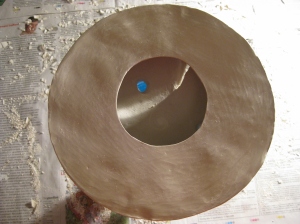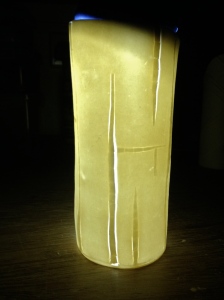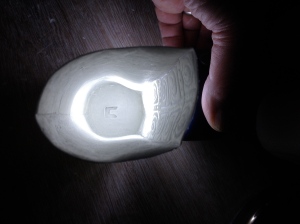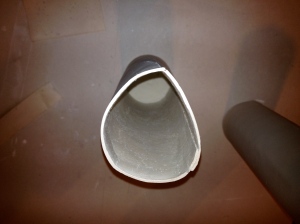I want to be quite transparent here. Light matters.
Why pursue translucency? What is it’s hold on me ?
I think there is something subtle and nuanced about the seeing of translucency. Like all perceptions it comes with emotional resonance. It is a paradox. It hints and implies. It suggests. Revealing without detail, it conceals in the act of showing. Detail and colour are shrouded in its semi opacity.
The phenomenon isn’t confined to ceramics. It is present wherever light is transmitted whilst the detail it carries is absorbed. Thus diaphanous materials, such as silk or nylon may be translucent, frosted glass, thin porcelain, mist and fog, thin clouds, bubbly water, or insect wings.
Curtis Benzl observed that translucency is to transparency as lingerie is to nudity. A sharp observation – partial revelation is always the more enticing.
So, to some extent I am seduced by translucency. So too, it would appear, are many other potters – Benzl himself, William Staefel, Angela Verdon, Mellor, Sasha Wardell, Paula Bastiaansen, Arnold Annen, Arne Ase and many others have made a living following the path.
Ceramic translucency offers a further paradox. At first the constituent materials are opaque. Thinned and heated to extreme temperatures, they become translucent. A phenomenon that is largely found in soft and flowing, or even insubstantial materials, emerges from stony hardness. It is truly a wonder. Strangely, although the emergence of transparency from melted sand is equally wondrous it isn’t, for me, as beautiful.
Most translucent materials flow. Although cool porcelain is hard its creation requires melting to the point of glass formation and thus this translucent material, too, has to flow during its creation, posing considerable problems for potters. Maintaining form whilst creating translucency is an endless battle and, I think, a worthwhile craft.
David Binns, in his recent lecture on Practice Research, observed that his early experience working wood left him wanting the surface of his ceramics to reflect the whole body. I share this aesthetic, although, for me, the body is necessarily quite insubstantial and the most important part of the object is its surface and texture. I see the transmitted light as part of both aspects. The shape and form are ways of carrying and using the light transmission and modification characteristics of the material.






























